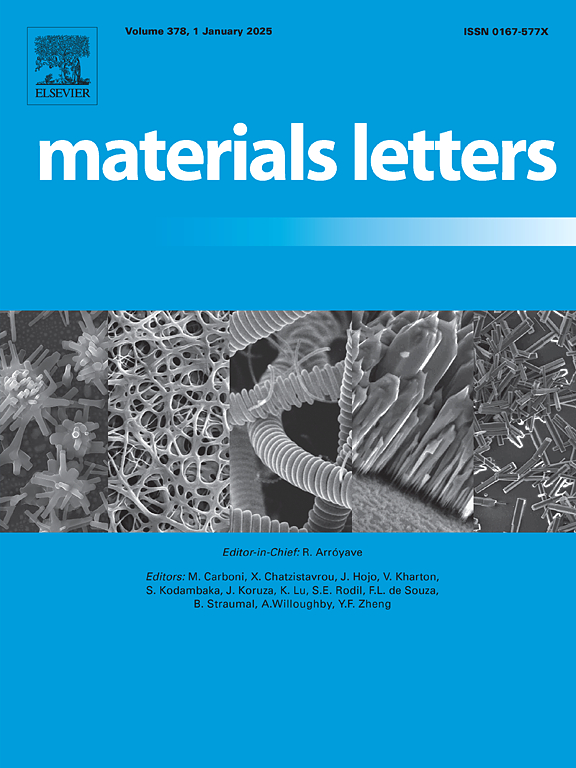A comparative analysis of nylon 610 production: Thermal efficiency and environmental considerations
IF 2.7
4区 材料科学
Q3 MATERIALS SCIENCE, MULTIDISCIPLINARY
引用次数: 0
Abstract
Nylon 610, a versatile polyamide, is widely used in industrial applications requiring high mechanical and thermal stability. This study investigates the synthesis of nylon 610 using two different methods: sebacic acid and sebacoyl chloride. This study conducts a comparative analysis to evaluate each method’s thermal properties, reaction conditions, environmental impact, and feasibility. Differential Scanning Calorimetry (DSC), Thermogravimetric analysis (TGA), and Fourier Transform Infrared Spectroscopy (FTIR) were employed to characterize the resulting polymers. The results demonstrated that nylon 610 synthesized using sebacic acid exhibited higher thermal stability, greater enthalpy of melting, and sharper crystallization peaks, indicating a more organized polymer structure. Additionally, the sebacic acid method proved to be safer and environmentally friendly, producing water as the sole by-product, which is advantageous for large-scale applications. In contrast, the sebacoyl chloride method, while faster, required more stringent safety measures due to the production of hydrochloric acid (HCl). This study highlights the sebacic acid method as a more sustainable and efficient approach for synthesizing nylon 610, particularly for applications demanding high thermal performance.
尼龙610生产的比较分析:热效率和环境考虑
尼龙610是一种多功能聚酰胺,广泛用于需要高机械和热稳定性的工业应用。本研究研究了用癸二酸和癸二酰氯两种不同的方法合成尼龙610。本研究对每种方法的热性能、反应条件、环境影响和可行性进行了比较分析。采用差示扫描量热法(DSC)、热重分析(TGA)和傅里叶变换红外光谱(FTIR)对所得聚合物进行了表征。结果表明,癸二酸合成的尼龙610具有更高的热稳定性、更大的熔融焓和更清晰的结晶峰,表明聚合物结构更有组织。此外,己二酸法被证明更安全,更环保,只产生水作为唯一的副产物,有利于大规模应用。相比之下,皮脂酰氯法虽然更快,但由于生产盐酸(HCl),需要更严格的安全措施。这项研究强调了癸二酸法是一种更可持续和有效的合成尼龙610的方法,特别是对于需要高热性能的应用。
本文章由计算机程序翻译,如有差异,请以英文原文为准。
求助全文
约1分钟内获得全文
求助全文
来源期刊

Materials Letters
工程技术-材料科学:综合
CiteScore
5.60
自引率
3.30%
发文量
1948
审稿时长
50 days
期刊介绍:
Materials Letters has an open access mirror journal Materials Letters: X, sharing the same aims and scope, editorial team, submission system and rigorous peer review.
Materials Letters is dedicated to publishing novel, cutting edge reports of broad interest to the materials community. The journal provides a forum for materials scientists and engineers, physicists, and chemists to rapidly communicate on the most important topics in the field of materials.
Contributions include, but are not limited to, a variety of topics such as:
• Materials - Metals and alloys, amorphous solids, ceramics, composites, polymers, semiconductors
• Applications - Structural, opto-electronic, magnetic, medical, MEMS, sensors, smart
• Characterization - Analytical, microscopy, scanning probes, nanoscopic, optical, electrical, magnetic, acoustic, spectroscopic, diffraction
• Novel Materials - Micro and nanostructures (nanowires, nanotubes, nanoparticles), nanocomposites, thin films, superlattices, quantum dots.
• Processing - Crystal growth, thin film processing, sol-gel processing, mechanical processing, assembly, nanocrystalline processing.
• Properties - Mechanical, magnetic, optical, electrical, ferroelectric, thermal, interfacial, transport, thermodynamic
• Synthesis - Quenching, solid state, solidification, solution synthesis, vapor deposition, high pressure, explosive
 求助内容:
求助内容: 应助结果提醒方式:
应助结果提醒方式:


